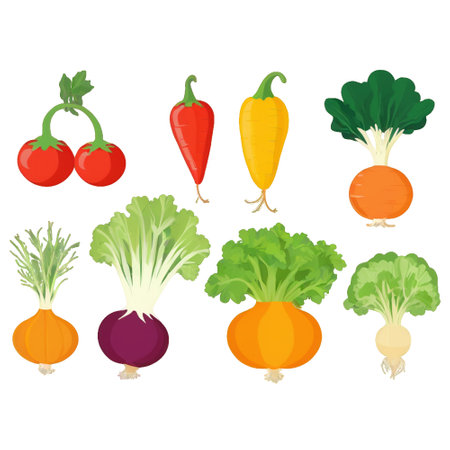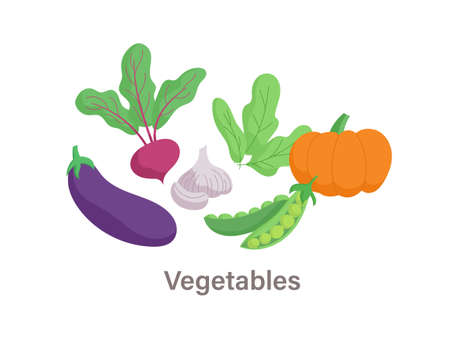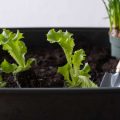Introduction to UK Climate Zones
The United Kingdom is renowned for its varied and unpredictable weather, but beneath this reputation lies a series of distinct climate zones that significantly influence gardening and agriculture. From the milder, wetter conditions in the west to the colder, drier climates in the east, these regional variations shape everything from planting schedules to crop selection. Gardeners and growers across the UK must take into account local temperature ranges, rainfall patterns, frost dates, and sunlight hours when planning their vegetable plots. Understanding these climate zones is essential for making informed decisions about when and what to plant, ensuring healthy growth and optimal yields throughout the growing season.
2. Mapping the Main UK Climate Zones
The United Kingdom’s varied geography gives rise to distinct climate zones, each with its own influence on vegetable gardening. Understanding these primary climate regions is fundamental for planning when and what to plant for optimal yield and quality.
Primary UK Climate Regions
| Climate Zone | Location Examples | Key Characteristics | Impact on Vegetable Growing |
|---|---|---|---|
| Maritime (Oceanic) | South West England, West Wales, Western Scotland, Northern Ireland | Mild winters, cool summers, high rainfall, minimal temperature extremes | Longer growing season; risk of waterlogging; favourable for brassicas, potatoes, leafy greens |
| Temperate (Lowland Continental) | South East England, East Anglia, Midlands | Warmer summers, colder winters, moderate rainfall, more sunshine hours | Early spring sowing possible; supports a wide variety of crops including tomatoes and courgettes; occasional late frosts require caution |
| Upland (Highland) | Pennines, Scottish Highlands, parts of North Wales and Cumbria | Cooler temperatures year-round, higher rainfall, shorter frost-free period | Shorter growing season; best suited to hardy vegetables like root crops and cabbages; protection needed from wind and rain |
Defining Characteristics by Region
- Maritime Areas: Frequent cloud cover and consistent moisture support continuous growth but may challenge crops sensitive to excess water.
- Temperate Lowlands: Greater sunlight and warmth promote diversity in planting options and longer periods for heat-loving vegetables.
- Upland Zones: Exposure to wind and cooler conditions necessitates robust varieties and often sheltering techniques such as cloches or fleece.
Regional Considerations for Gardeners
The variability in the UK’s climate means that even within a single region, local microclimates can further affect planting times. Gardeners should observe their specific site’s exposure to wind, frost pockets, and soil drainage for the most accurate planning.

3. Vegetable Planting Calendars by Zone
Understanding the best times to sow and plant vegetables is crucial for successful gardening across the UK’s diverse climate zones. Each region presents unique conditions, influencing when and how different crops should be established. Below is a seasonal guide tailored to the primary UK climate zones: Southern England, Midlands and East Anglia, Northern England, Scotland, and Coastal Areas.
Southern England
Spring (March – May)
This zone enjoys an earlier spring, allowing sowing of broad beans, peas, carrots, and lettuce from late March onwards. Potatoes can be planted from early April.
Summer (June – August)
Ideal for successional sowings of salad leaves and French beans. Maincrop carrots and leeks go in during June.
Autumn & Winter (September – February)
Late summer sowings of spinach and overwintering onions perform well. Hardy brassicas like kale can be transplanted by September.
The Midlands & East Anglia
Spring (March – May)
Sow hardy vegetables such as parsnips and onions from mid-March. Wait until late April for more tender crops like courgettes.
Summer (June – August)
Continue planting beetroot and dwarf beans through June. Successional sowings of radish and lettuce thrive here.
Autumn & Winter (September – February)
Sow winter-hardy varieties such as field beans in September for early spring harvests.
Northern England
Spring (March – May)
Sowing typically starts later due to cooler conditions—mid-April for most vegetables. Early potatoes can be chitted indoors before outdoor planting in May.
Summer (June – August)
This period offers the main window for most vegetable planting, including runner beans and cabbage.
Autumn & Winter (September – February)
Focus on harvesting rather than sowing; overwintering garlic and onions can be planted in October.
Scotland
Spring (April – June)
Sowing starts in late April or even May due to colder soils. Use cloches or fleece to warm soil for carrots and lettuce.
Summer (July – August)
Main planting time for root vegetables and brassicas. Fast-maturing salad crops can be sown throughout summer.
Autumn & Winter (September – March)
Very limited outdoor sowing; focus on protecting established crops with mulch or fleece.
Coastal Areas
Mild Winters & Cool Summers
The moderating effect of the sea allows slightly earlier spring planting—broad beans, onions, and peas can often go in by mid-March. Summer plantings benefit from reduced risk of heat stress but may need wind protection.
Key Tips:
- Select varieties bred for local conditions where possible.
- Always consult local frost dates before sowing outdoors.
- Cloches, polytunnels, or cold frames extend the growing season in cooler or exposed zones.
This zonal approach ensures that UK gardeners maximise yields by matching their planting calendars to their specific regional climates, making the most of every growing season.
4. Popular UK Vegetables and Their Climate Preferences
Understanding how commonly grown vegetables align with the UKs diverse climate zones is essential for achieving a successful harvest. The UKs temperate maritime climate means that growing seasons and temperature ranges vary from region to region, affecting which vegetables thrive best in each area. Below is an analysis of popular UK vegetables, their climate preferences, and how these factors influence optimal planting times.
Vegetable Growth Cycles and Climate Alignment
Different vegetables have unique requirements in terms of temperature, sunlight, and moisture. For instance, root vegetables such as carrots and parsnips are well-suited to cooler northern regions, while heat-loving crops like tomatoes perform better in the milder southern areas or under protection. Matching vegetable varieties to specific climate zones can improve yields and reduce the risk of crop failure.
Common UK Vegetables and Preferred Conditions
| Vegetable | Preferred Climate Zone | Optimal Planting Period | Notes on Growth Cycle |
|---|---|---|---|
| Potatoes | All zones; best in mild, frost-free areas | March–April | Tolerant of cooler temperatures; avoid late frosts during early growth |
| Carrots | Northern & Central zones | March–June | Requires loose, stone-free soil; prefers consistent moisture |
| Cabbage (Summer/Autumn) | All zones | February–May (indoors), March–June (outdoors) | Hardy; withstands lower temperatures well |
| Broad Beans | Northern & Western zones | October–November or February–April | Copes with cool weather; sow in autumn for earlier crops in mild regions |
| Runner Beans | Southern & Eastern zones (sheltered sites) | April–June (after last frost) | Sensitive to frost; thrives with warmth and good rainfall |
| Tomatoes (Outdoor) | Mainly Southern zone or under protection elsewhere | Late April–May (after last frost) | Loves warmth; needs shelter from wind and consistent watering |
| Lettuce | All zones (prefers cooler conditions) | March–July (succession sowing) | Bolt-resistant varieties best for warmer periods; requires regular moisture |
| Parsnips | Northern & Central zones | February–May | Tolerates cold soil; long growing season for best flavour development |
| Courgettes/Zucchini | Mainly Southern & Eastern zones or protected spots nationwide | Late May–June (after last frost) | Sensitive to cold; rapid growth in warm, moist conditions |
| Onions (from sets) | All zones (best results in drier regions) | March–April (spring sets), September–October (autumn sets) | Poor performance in waterlogged soils; needs even watering during bulbing stage |
Key Considerations for UK Gardeners:
- Select regionally appropriate varieties: Many seed suppliers offer cultivars bred for specific climates within the UK.
- Shelter and protection: In cooler or more exposed areas, use cloches, fleece or greenhouses to extend the growing season.
- Sowing timing: Always refer to local frost dates when planning outdoor sowings, especially in Scotland or northern England.
This alignment of vegetable selection with local climate patterns not only maximises crop success but also supports sustainable gardening practices across the UK’s varied landscapes.
5. Tips for Successful Planting in Challenging UK Conditions
Expert Strategies for Adapting to Unpredictable Weather
UK gardeners frequently face unpredictable weather patterns, from late frosts to unseasonal heatwaves and heavy rainfall. To maximise your vegetable yields, invest in cloches, cold frames, or fleece to protect young plants during sudden drops in temperature. Select hardy or fast-maturing vegetable varieties that can cope with short growing seasons and fluctuating conditions. Stagger sowing times for key crops such as carrots, lettuce, and beans, which allows you to spread the risk of loss due to unexpected weather events.
Managing Soil Quality Across Diverse Regions
The UK’s soil types range from sandy loam in the south-east to heavy clay in the Midlands and acidic soils in Scotland. Conduct a soil test before planting to understand pH and nutrient levels. Regularly enrich your soil with organic matter such as compost or well-rotted manure to improve structure and drainage—especially important in wetter western regions. For areas prone to waterlogging, consider raised beds or mounded rows, which help roots avoid sitting in saturated soil during prolonged wet spells.
Mitigating Risks Related to Local Climate Variability
Given the UK’s microclimates—where neighbouring towns may experience markedly different conditions—keep a detailed garden diary tracking local frost dates, rainfall, and successful planting windows. Use mulch around plants to regulate soil temperature and retain moisture during dry periods. If your area is susceptible to strong winds, erect windbreaks using hedges or fencing to reduce plant stress and prevent damage.
Embracing Flexible Growing Techniques
Adopt a flexible approach by using containers and movable planters, allowing you to shift tender crops indoors or into sheltered positions when severe weather threatens. Consider intercropping fast-growing leafy greens among slower vegetables to make best use of limited warm periods. Staying attuned to local weather forecasts and being ready to act quickly can make all the difference in achieving a productive harvest, no matter which UK climate zone you call home.
6. Resources and Local Support Networks
Navigating the UK’s diverse climate zones and making informed decisions about when to plant popular vegetables can be greatly enhanced by tapping into local resources and support networks. The United Kingdom boasts a wealth of gardening societies, online platforms, and community allotment projects that cater specifically to the needs of British gardeners.
UK-Based Gardening Resources
For tailored advice and up-to-date information, organisations such as the Royal Horticultural Society (RHS) offer comprehensive guides on regional planting calendars, soil health, and climate-specific cultivation techniques. Their website provides interactive tools to help you determine the best planting times based on your postcode and local climate zone.
Gardening Societies
Joining a local gardening society can connect you with experienced growers in your area who understand the unique challenges of your microclimate. Groups like Garden Organic, the National Allotment Society, and county-based horticultural clubs regularly hold workshops, seed swaps, and seasonal events that foster knowledge sharing and hands-on learning.
Community Allotment Projects
For practical support and a sense of community, many towns and cities offer access to allotments—shared plots where residents can cultivate vegetables together. These spaces are invaluable for exchanging tips on dealing with local weather conditions, pest management, and crop rotation strategies specific to your region. Community gardening projects often welcome beginners, providing mentoring and group purchasing schemes for seeds and equipment.
Further Information and Support
If you are seeking further guidance, consider joining online forums such as Grow Your Own or the UK Veg Gardeners’ Facebook groups, where members discuss climate trends, share success stories, and troubleshoot common issues. Local council websites also list available allotments and seasonal gardening initiatives relevant to your area.
By making use of these resources and building connections within your local gardening network, you will be better equipped to adapt your planting schedule to the UK’s varied climate zones—ultimately leading to more successful harvests of your favourite vegetables.


